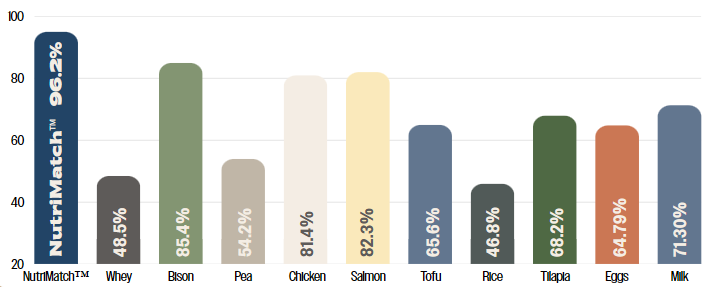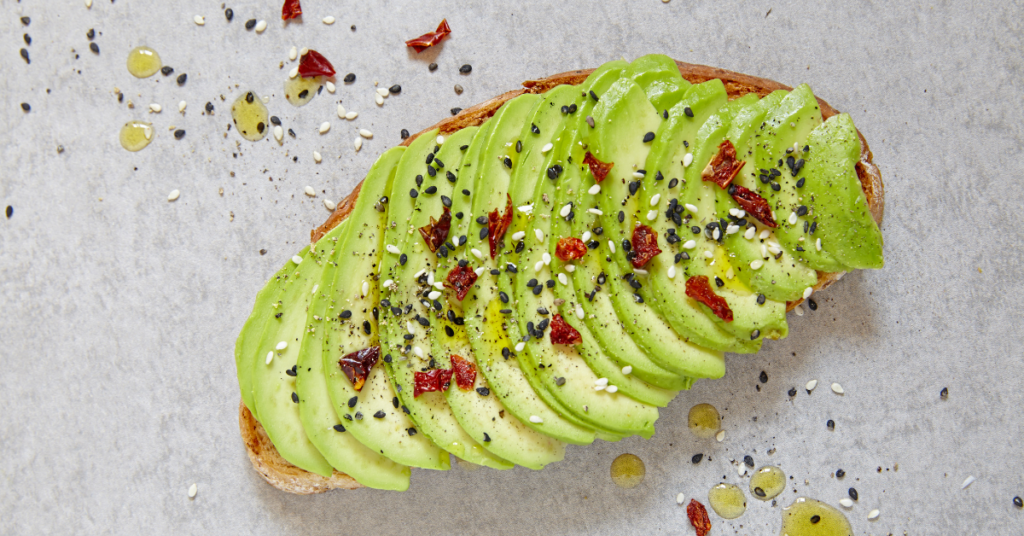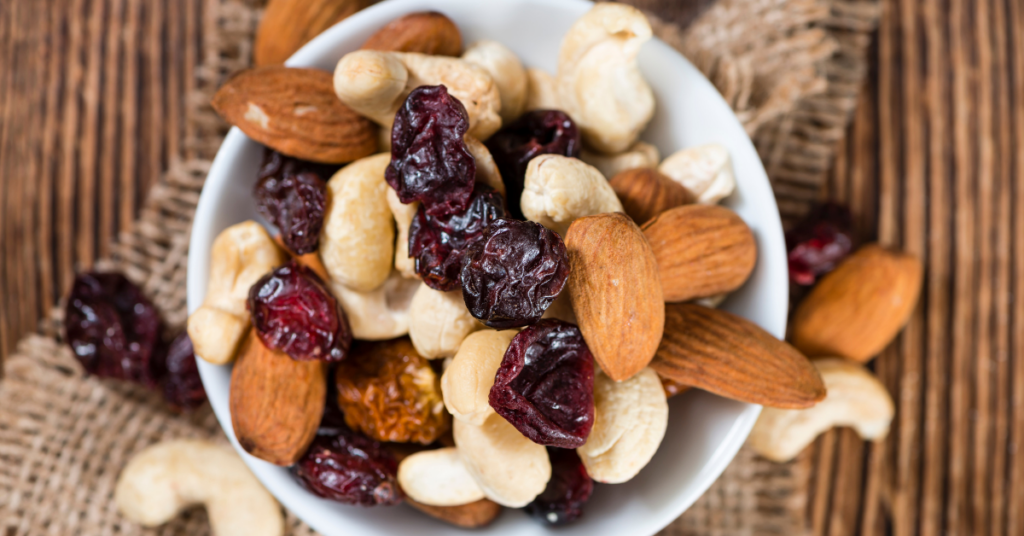Walk into any supplement store or gym locker room, and you’ll hear the same phrase repeated like gospel:
“Whey is the gold standard of protein.”
For decades, whey has been touted as the ultimate protein source. Fast-digesting. Complete. Clinically studied. And it’s true—whey has a long track record in sports nutrition and diet culture. It’s in nearly every mainstream protein shake and powder on the market.
But here’s the truth: Whey was never built to match human biology
It was just the best we had at the time.
Whey became popular because it was cheap, abundant, and easy to isolate—not because it was optimized for muscle growth. Digestibility was mistaken for quality, and marketing filled in the rest.
The Problem with Tradition
The idea that whey is superior has less to do with science and more to do with timing, marketing, and convenience. Whey is a byproduct of cheese production—it literally was a waste product—cheap, abundant, and easy to isolate. When the supplement boom began in the ’80s and ’90s,whey became the go-to protein simply because it was available and digestible, but more importantly, it was cheap to produce because producers had no market for it.
Is this the gold standard? You’re literally eating last gen’s trash.
How Your Body Repairs and Builds Muscle
When you train—whether it’s heavy lifting, CrossFit, or just pushing your limits—you’re causing micro-tears in muscle fibers. This isn’t a bad thing. It’s how muscle growth begins.
After training, your body kicks into recovery mode. But here’s the thing: your body doesn’t build muscle using grams of protein. It builds with amino acids. Those grams only matter if they’re made of the right ones, in the right balance.
Your body needs all nine essential amino acids (EAAs)—the ones it can’t make on its own—to rebuild and repair muscle tissue. And it doesn’t just need some of each. It needs them all, simultaneously, in precise ratios that match human muscle.
If even one of them is missing or underrepresented, muscle protein synthesis stalls. Your body doesn’t “partial-build” muscle. Construction grinds to a halt.. The remaining amino acids are either burned for energy or, if unused, stored as fat.
This is called the limiting amino acid effect, and it’s the single biggest reason why “complete proteins” like whey fall short. Whey short… They are complete, but not balanced.
Whey is Severely Imbalanced
Yes, whey contains all nine essential amino acids (EAAs), but not in the ideal ratios your muscles need. It’s extremely high in leucine, which helps trigger protein synthesis, but quite low in threonine, histidine, and methionine, which are also required to complete it. It’s actually one of the worst
Your muscles are made of protein. Protein is made of amino acids.
“Amino acids only build when they’re in perfect balance. When they are present in the exact ratios your muscles and collagen use and need during recovery and repair“
Imagine trying to build a house. You have tons of materials – concrete, wood, and wiring, but only enough wood for the outside frame. Can you finish construction?
Of course not. You can barely get half of it done.
So when a post-workout shake contains 30g of protein but has poor amino acid balance? You might only be getting 15g worth of usable muscle-building fuel. The rest gets wasted.
This is why you can hit your protein target and still fail to gain lean mass—because your protein isn’t matched to what your muscles actually need
Muscle protein synthesis works the same way. It doesn’t matter if you have a lot of one amino acid if you’re low on another.
Whey is mistakenly identified as a premium product because it is high in leucine which is used to trigger protein synthesis. But having an excess of leucine does nothing if your body doesn’t have all 9 EAAs in the right place at the right time. It’s like having 10 construction managers at the construction site —but only a few building materials to use. Most of those construction managers will be floating around with nothing to do.
That business would go bankrupt really fast if it had to pay people to stand around and not do anything.
So what happens to those unbalanced proteins with too much of one amino acid and not enough of another? Where do the extra amino acids go if they can’t be used for muscle? All that extra labor is gets fired… Cleaned up by your liver. This excess gets converted to energy or stored as fat.
Here’s how it works:
- Deamination: The amino acid’s nitrogen group is stripped off.
- Gluconeogenesis: The remaining carbon skeleton is converted into glucose.
- Fat Storage: If that glucose isn’t immediately used, it gets stored as fat.
Adding fat is the last thing you want from eating whey. Your goal is lean muscle—not just weight gain.
..and this is why many are caught in this endless bulk and cut trap. We don’t have to accept “just because there is no other way”… it’s there because of imbalance.
Match Rate: The Metric That Changes Everything
Match Rate is a new way of measuring protein quality. Instead of just asking “Did it digest?”, it asks: “Can your body actually use it to build muscle?”
You can measure the amino acid profile of every food and compare that to the amino acid profile that your muscles are built of. This is a fairly simple math comparison between two amino acid profiles.
Whey measures at a dismal 48.48% match rate to the amino acid profile of human muscle. It’s one of the worst out there of all proteins.

That means over half of what you eat isn’t building muscle, it’s being converted into fat instead. It’s not that you can’t grow muscle with whey – it just does so very inefficiently. To cover up those inefficiencies, you have to eat twice as much as you actually need. No wonder why you have to do endless growth and cut cycles. There’s no way around that basic biology equation… until now…
NutriMatch™ is our proprietary algorithm that calculates the exact blend of plant proteins to provide a near-perfect 96.2% match rate to the amino acid profile your muscles actually use and need, so you can train harder, recover faster, and perform at your best. That means almost every gram you eat can be converted into strength, and growth… no excess, no waste.
A plant protein blend with a 96.2% match rate is twice as effective as whey. You’d need to eat twice as much whey—and deal with all that extra fat weight gain—to get the same effect.
But it doesn’t stop there. NutriMatch is not just better than whey. It’s even better than chicken, beef, eggs, and or beef.
Marketing Kept Whey on Top
Whey’s rise wasn’t about optimization. It was about being in the right place at the right time.
It was dirt cheap. It was abundant. It was literally being thrown away. It digests well. Brands found a cheap, marketable protein source, and consumers got used to it. Fitness culture embraced it. Supplement stores stocked shelves with it.
There just wasn’t any alternative.
But now that we can quantify how usable a protein really is with MatchRate, the cracks are obvious.
Whey was never really the gold standard. It was the only standard. Until now.
The Future Belongs to Smarter Protein
So here’s the thing. Don’t have to feel bad that you’ve had to deal with a low quality protein source for so long. That’s how progress happens. Science figures things out and determines a better way.
NutriMatch™ was designed to solve everything whey couldn’t. It combines multiple plant proteins in precise ratios to mirror the amino acid profile of human muscle. That means better usability, less waste, and leaner gains. ..and even better is that plant protein is cleaner living. No hormones. No oils. Better skin. Better on your gut.
With this new knowledge, because of these facts, Whey is one of the worst balanced proteins you can consume on the market today. It’s okay, it’s the best we had at the time, and it’s cheap. But you have to eat twice as much for the same benefit, so now it isn’t so cheap knowing it’s less than 50% effective.
If you’re still using whey, it’s time to ask yourself: Are you fueling your goals—or just fueling tradition? Are you not tired of the breakouts, the bloat, the smell, the money you are wasting putting on pounds of fat instead of pounds of lean muscle?
Out of that 30g whey shake, you can’t even use 15g for muscle building.
It’s time to upgrade to a protein that actually matches what your body needs. No bloat. No hormonal baggage. No wasted grams.
Choose NutriMatch™.
Because your body deserves more than old assumptions and outdated science. It deserves precision.



